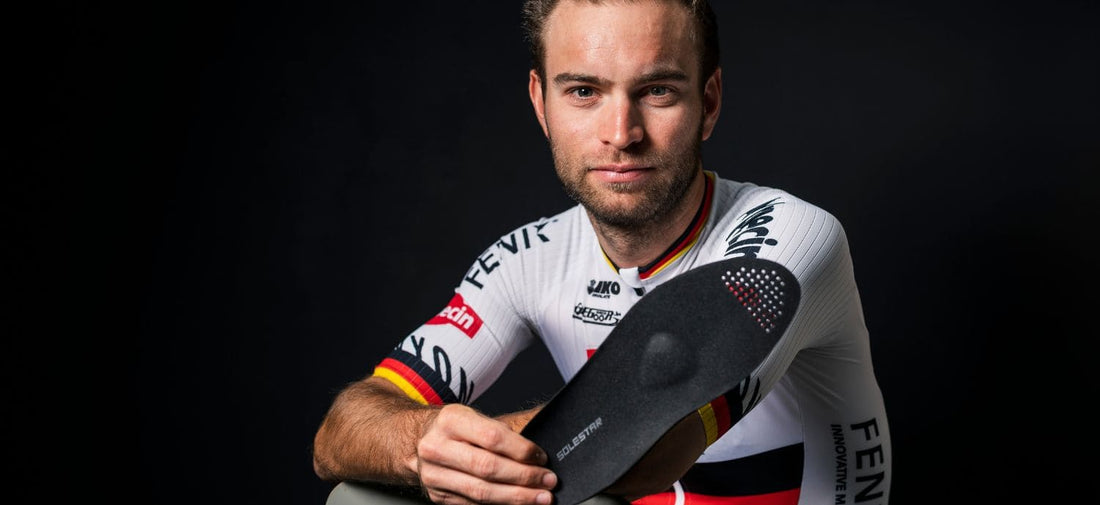
Bicycle saddle pain
Saddle pain is one of the most common complaints among cyclists, whether you’re new to riding or logging long miles every week. Discomfort in this area can quickly turn an enjoyable ride into something frustrating, and if ignored, it can even discourage you from getting back on the bike.
The key to solving saddle pain is understanding where it comes from and how to manage it both on and off the bike.
What causes saddle pain when cycling?
Saddle pain often happens when the weight of your body is not properly supported by your sit bones. Instead, pressure ends up on soft tissue and nerves that aren’t meant to carry it. Here are the main reasons this occurs:
Excessive pressure on soft tissue areas
When the saddle presses on sensitive tissue instead of the sit bones, discomfort, numbness, or even pain can build up quickly.
Improper saddle height, tilt, or fore-aft position
A saddle that’s set too high, tilted incorrectly, or pushed too far forward/back can throw your whole position off. Even small adjustments can change how your weight is distributed.
Saddle shape or width not suited to your anatomy
Everyone’s body is different, which means a “one-size-fits-all” saddle doesn’t work. A saddle that’s too narrow, too wide, or lacks a cutout can create pressure points and irritation.

Common issues behind saddle discomfort
Beyond the saddle itself, there are several everyday factors that can make pain worse and keep coming back if they’re not addressed.
Prolonged seated position without weight shifts
Staying in one position for too long puts constant pressure on sensitive areas. Without standing up or changing posture occasionally, blood flow gets restricted, leading to numbness or soreness.
Low-quality or worn-out cycling shorts
Your shorts play a huge role in comfort. Thin padding, worn chamois, or poor fit can increase friction and pressure points, especially on longer rides. Investing in a good pair of cycling shorts can make a noticeable difference.
Incorrect bike fit leading to poor weight distribution
If your bike isn’t set up for your body, your weight may rest unevenly on the saddle. This not only causes pain in the perineal area but can also lead to hip, back, or knee issues over time. Even small adjustments in saddle height, tilt, or handlebar reach can ease the load on sensitive spots.

Immediate fixes for saddle pain during a ride
If discomfort starts creeping in while you’re out on the bike, you don’t always have to cut your ride short. A few quick adjustments and habits can make things far more manageable until you’re done.
Adjust saddle angle to relieve pressure points
Sometimes it’s just a matter of how the saddle sits. Even a small tilt forward or backward can shift your weight and ease the pressure on sensitive areas. Just be careful not to overdo it, extreme angles often create new problems instead of solving the old ones.
Stand on the pedals periodically to improve blood flow
Staying seated the whole ride keeps all the pressure in one spot. By standing up sometimes, even for just 10 to 20 seconds, you give your sit bones and soft tissue a much-needed break. This simple move restores circulation and helps reduce numbness.
Apply chamois cream to reduce friction and irritation
On longer rides, skin irritation can add to the discomfort. A thin layer of chamois cream works like a barrier, cutting down on rubbing and hotspots so you can pedal more comfortably for longer.
Preventing saddle pain long-term
Quick fixes can help during a ride, but true comfort comes from setting up your bike and gear so that pain doesn’t build up in the first place. A few smart choices can make every ride smoother and more enjoyable.
Choose a saddle that matches your sit bone width
The right saddle isn’t just about style, it’s about fit. If it’s too narrow or too wide, pressure ends up in all the wrong places. By getting your sit bones measured (something most bike shops can do in minutes), you’ll know exactly which saddle shape supports you best and avoids strain on soft tissues.
Invest in high-quality, padded cycling shorts
Cycling shorts with a proper chamois act as a cushion between you and the saddle. Good shorts reduce friction, wick away sweat, and spread pressure evenly. The fit should be close to the body, but not so tight that it restricts movement.

Use cycling insoles to promote proper pelvic alignment
Comfort on the bike starts from the ground up. When your feet are supported correctly, your knees and hips stay in line, which keeps your pelvis stable on the saddle. Insoles designed for cycling, like Solestar insoles, offer this stability by locking your feet into an optimal position. The result: less rocking, smoother pedaling, and a noticeable reduction in saddle discomfort on longer rides.

